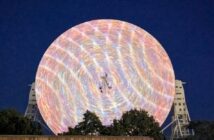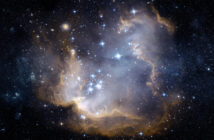The discovery of a planet orbiting our nearest star, Proxima Centauri, has been highly commended among Physics World 2016 top 10 breakthroughs.
As part of an international team of astronomers, Postdoctoral Researcher at The Open University, Dr John Barnes, was instrumental in establishing that the observed ‘wobble’ of Proxima Centauri was caused by a nearby planet, which is referred to as Proxima b.
He said: “Once we had established that the wobble wasn’t caused by star spots, we knew that that there must be a planet orbiting within a zone where water could exist, which is really exciting. If further research concludes that the conditions of its atmosphere are suitable to support life, this is arguably one of the most important scientific discoveries we will ever make.”
The achievements of Dr John Barnes have also been celebrated in the Guardian, New York Times, National Geographic, Gizmodo, Science News, and the Japan Times.
Visit our website for information about research in Space Science at the OU. The courses relevant for those interested in developing a career in Space Science include the BSc (Honours) Natural Sciences (Astronomy and Planetary Sciences) the MSC in Space Science and Technology.



